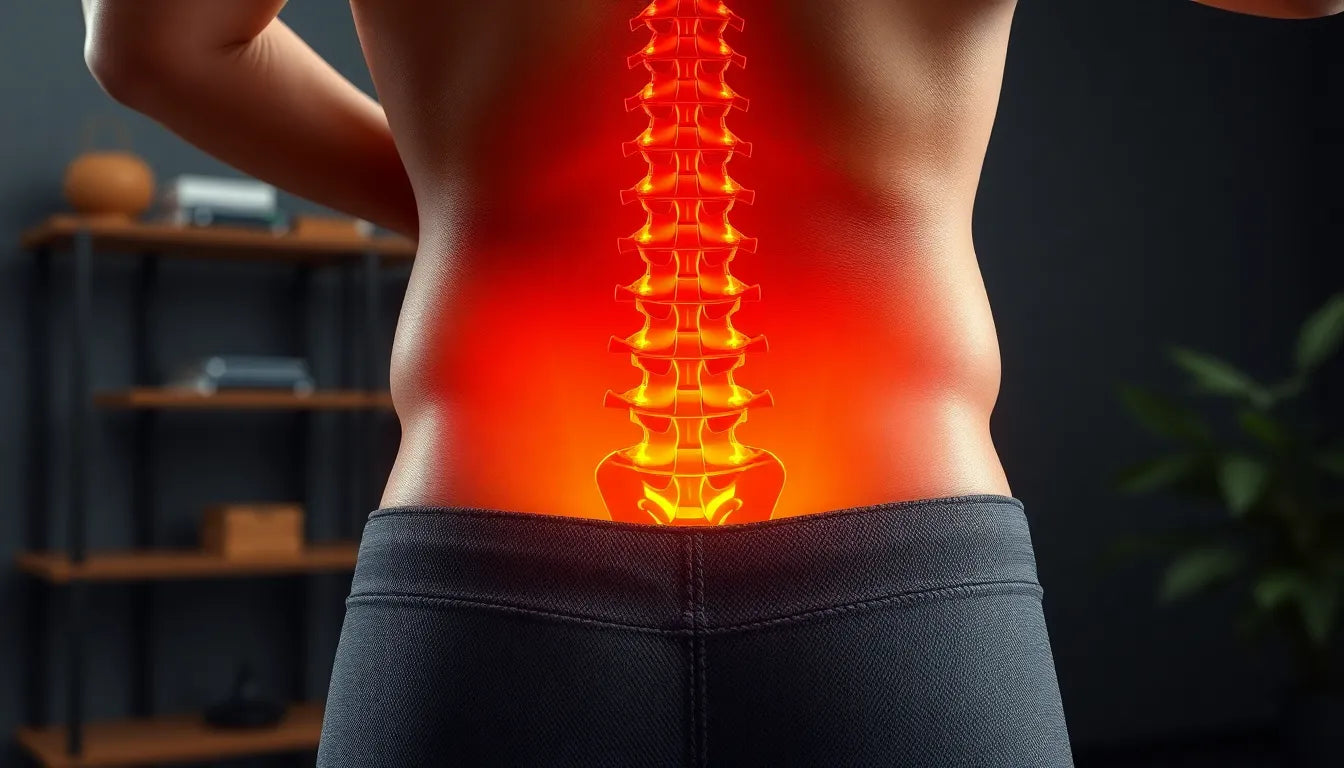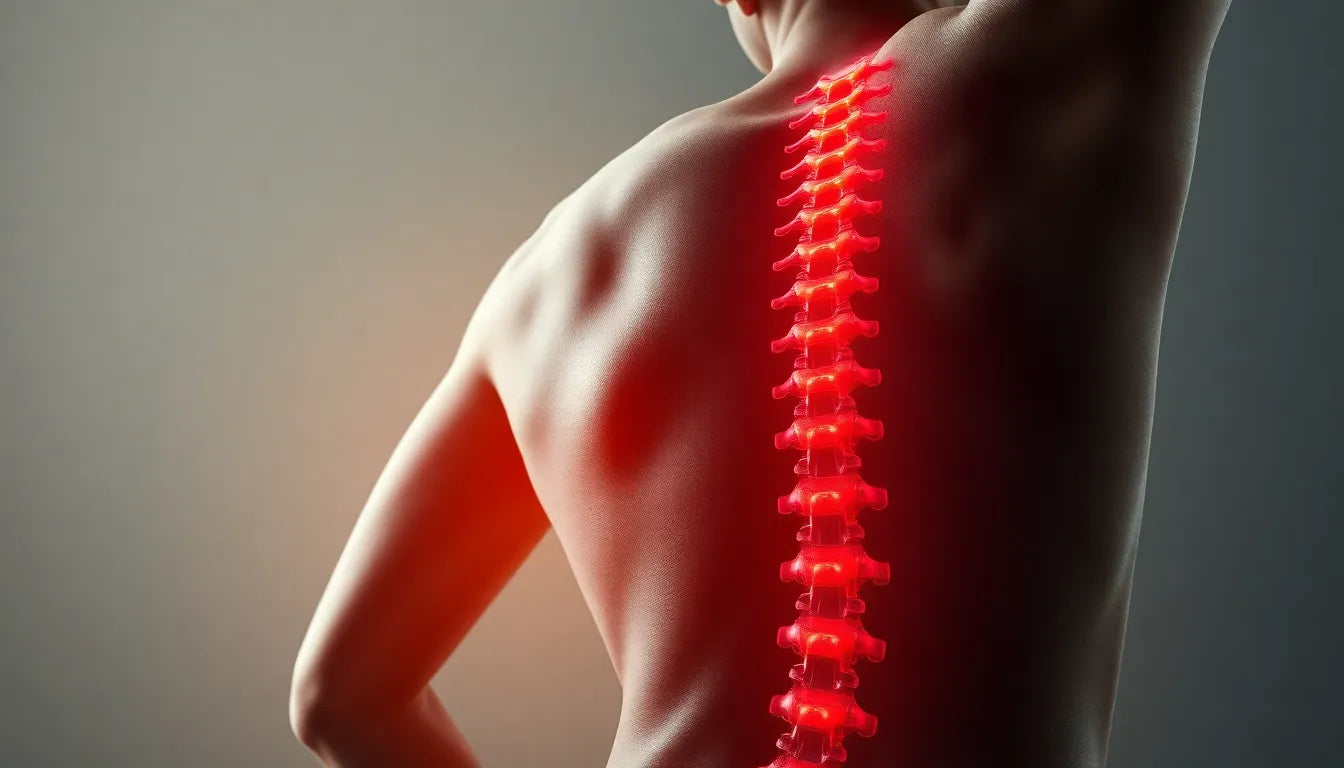Understanding the intricacies of a lumbar herniated disc is crucial for anyone experiencing lower back pain. A lumbar herniated disc occurs when the soft inner gel of a spinal disc protrudes through a tear in its tougher outer layer, often resulting in pressure on nearby nerves. This condition can arise from various causes, such as age-related degeneration, sudden trauma, or repetitive strain. As one of the most prevalent sources of lower back pain, a herniated disc can significantly disrupt daily activities, making even simple tasks challenging.
importance of exercise in recovery
Exercise plays a pivotal role in the recovery process for those suffering from a lumbar herniated disc. Engaging in gentle exercises can help manage pain and facilitate the healing process by improving circulation and strengthening the muscles that support the spine. Unlike invasive procedures, exercise offers a non-invasive strategy that not only alleviates discomfort but also enhances overall spinal function. By incorporating specific exercises into their routine, individuals can experience significant relief and an improved quality of life.
setting the stage for recovery
When embarking on a recovery journey from a lumbar herniated disc, it's essential to adopt a tailored exercise approach. This customization should take into account an individual's pain levels and be guided by professional advice to ensure safety and effectiveness. The purpose of this blog post is to provide a comprehensive guide to safe and effective exercises designed specifically for lumbar herniated disc recovery. By following these recommendations, individuals can unlock pain relief and regain their mobility, ultimately leading to a more active and fulfilling life.
core principles of exercise therapy for lumbar herniated disc
Embarking on a journey to recovery from a lumbar herniated disc involves understanding the core principles of exercise therapy. One of the fundamental aspects is gentle core strengthening and flexibility training. The core muscles, including the abdominals, obliques, and lower back muscles, play a crucial role in supporting the spine and maintaining proper posture. Strengthening these muscles can help alleviate pressure on the herniated disc, reducing pain and preventing further injury.

Lumbar support belt
Støtter og stabiliserer lænden for at lindre smerter og give kompression ved diskusprolaps eller lændebesvær.
Flexibility exercises are equally important as they help relieve tension in the muscles and improve overall mobility. Stretching the muscles around the spine can reduce stiffness and enhance the range of motion, making daily activities more manageable. It's essential to approach these exercises with care, ensuring they are performed gently to avoid exacerbating symptoms.
stabilization and low-impact activities
Stabilization exercises are another key component of exercise therapy for lumbar herniated disc recovery. These exercises focus on maintaining proper alignment and posture, which can significantly reduce pain and discomfort. Activities such as wall sits and press-up back extensions are excellent for building muscle endurance and supporting the spine without placing undue stress on the affected area.
Incorporating low-impact aerobic activities like walking and swimming into your routine can also be beneficial. These activities promote cardiovascular health and improve circulation, aiding in the healing process. They provide a safe way to stay active without putting additional strain on the spine, making them ideal for individuals recovering from a lumbar herniated disc.
detailed exercise descriptions
Understanding how to perform specific exercises safely and effectively is crucial for recovery. Let's delve into some recommended exercises:
- Partial Crunches (with bent knees): Lie on your back with your knees bent and feet flat on the floor. Cross your arms over your chest and gently lift your shoulders off the ground, engaging your core muscles. Hold for a moment, then slowly lower back down. This exercise strengthens the core without straining the back.
- Hamstring Stretches: Lie on your back and lift one leg, keeping it straight. Use a towel or resistance band to gently pull the leg towards you, feeling a stretch in the hamstring. Hold for 20-30 seconds and switch legs. This stretch relieves lower back tension and improves leg flexibility.
- Wall Sits: Stand with your back against a wall and slide down into a sitting position, keeping your knees directly above your ankles. Hold this position for 10-15 seconds, then slowly rise back up. Wall sits enhance muscle endurance and support the spine.
- Press-up Back Extensions: Lie face down with your hands beneath your shoulders. Gently press your upper body off the floor, keeping your hips on the ground. This exercise helps extend the lumbar spine and improve flexibility.
research and evidence supporting exercise therapy
Numerous studies have highlighted the effectiveness of exercise therapy in managing symptoms of a lumbar herniated disc. Meta-analyses and systematic reviews suggest that engaging in regular exercise can reduce disc pressure, improve microcirculation, and alleviate pain and disability. While the specific types and regimens of exercises continue to be explored, evidence indicates that incorporating these gentle exercises at least twice weekly can lead to noticeable improvements.
For optimal results, it's recommended to continue these exercises for a minimum of two weeks, gradually increasing intensity as tolerated. The focus should remain on moderate effort, avoiding high-intensity or maximal exertion, particularly for older adults or those with severe symptoms. By adhering to these guidelines, individuals can experience significant pain relief and improved function, paving the way for a more active and fulfilling life.
additional recommended exercises for lumbar herniated disc recovery
Continuing with our exploration of beneficial exercises for lumbar herniated disc recovery, it's important to incorporate movements that enhance stability and mobility. The bird dog exercise is a great choice for stabilizing the lower back. Begin on all fours, then extend one arm forward and the opposite leg back, keeping your body aligned. Hold briefly before switching sides. This exercise strengthens the core and improves balance.
Another effective exercise is the knee to chest stretch. While lying on your back, pull one knee towards your chest, holding the position for 20-30 seconds. This gentle stretch helps relieve tension in the lower back and enhances hip mobility.
For further strengthening, try the bridging exercise. Lie on your back with knees bent and feet flat on the floor. Lift your hips towards the ceiling, squeezing your glutes, and hold for a few seconds before lowering. This exercise activates the glutes and supports the lumbar region.
The cat-camel stretch is excellent for spinal mobility. Position yourself on all fours, arching your back upwards (like a cat) and then dipping it downwards (like a camel). This movement helps increase flexibility and reduce stiffness in the back.
professional guidance with the McKenzie method
The McKenzie Method is a specialized approach that requires professional guidance due to its complexity. It focuses on pain centralization and disc repositioning, often starting with the prone on elbows position or the cobra pose. These exercises involve lying face down and gently lifting the upper body, promoting lumbar extension. It's crucial to perform these under supervision to ensure correct technique and avoid exacerbating symptoms.
aerobic and aquatic options for minimal spinal stress
Incorporating aerobic activities like walking and aquatic exercises can greatly benefit those recovering from a lumbar herniated disc. Walking is a low-impact activity that promotes cardiovascular health and enhances circulation without stressing the spine. Similarly, water-based exercises provide resistance and support, allowing for a full range of motion while minimizing impact on the back. These activities are excellent for maintaining fitness during recovery.

Men's Posture Shirt™ - Black
Forbedrer kroppens holdning, kan lindre smerter og spændinger med dokumenteret effekt.
concluding thoughts on exercise for lumbar herniated disc
Embarking on a recovery journey from a lumbar herniated disc requires a personalized and professionally supervised exercise regimen. By incorporating the exercises discussed, individuals can unlock pain relief and improve their quality of life. Additionally, ergonomic aids can complement these exercises, providing support and aiding recovery. Always consult with a healthcare provider to tailor the exercise program to your specific needs and ensure safe practice.
frequently asked questions
What are the signs that I should stop exercising?
If you experience increased pain, numbness, or weakness during exercise, it's important to stop and consult a healthcare professional. These symptoms may indicate that the exercise is aggravating your condition.
How soon can I expect to see improvements?
While timelines can vary, many individuals begin to notice pain relief and improved function within two weeks of consistent exercise. Patience and regular practice are key to recovery.
Can I perform these exercises at home?
Yes, many of these exercises can be safely performed at home. However, it's important to follow safety precautions and consider consulting a professional for guidance, particularly when starting a new routine.
Do I need special equipment for these exercises?
Most exercises discussed do not require special equipment. For those that do, such as resistance bands, alternatives like towels can be used. Ensure you have a comfortable mat for floor exercises.
Is professional supervision necessary for all exercises?
While many exercises can be done independently, professional supervision is crucial for advanced techniques like the McKenzie Method to ensure correct form and prevent injury.
Kilder
- Phoenix Rehab Group. (n.d.). "Exercises for Herniated Disc."
- Orthopedic NJ. (n.d.). "Herniated Disc Exercises and Stretches."
- Mainstay Medical. (n.d.). "Exercises for Herniated Disc in Lower Back."
- Goodpath. (n.d.). "Exercises for Herniated Disc."
- YouTube. (n.d.). "Exercises for Herniated Disc."
- Medical News Today. (n.d.). "What to know about herniated disks."
- Petersen Physical Therapy. (n.d.). "Herniated Disc Exercises to Heal Quickly."
- PTCOA. (n.d.). "Exercises and Stretches for Herniated Disc Relief."


















